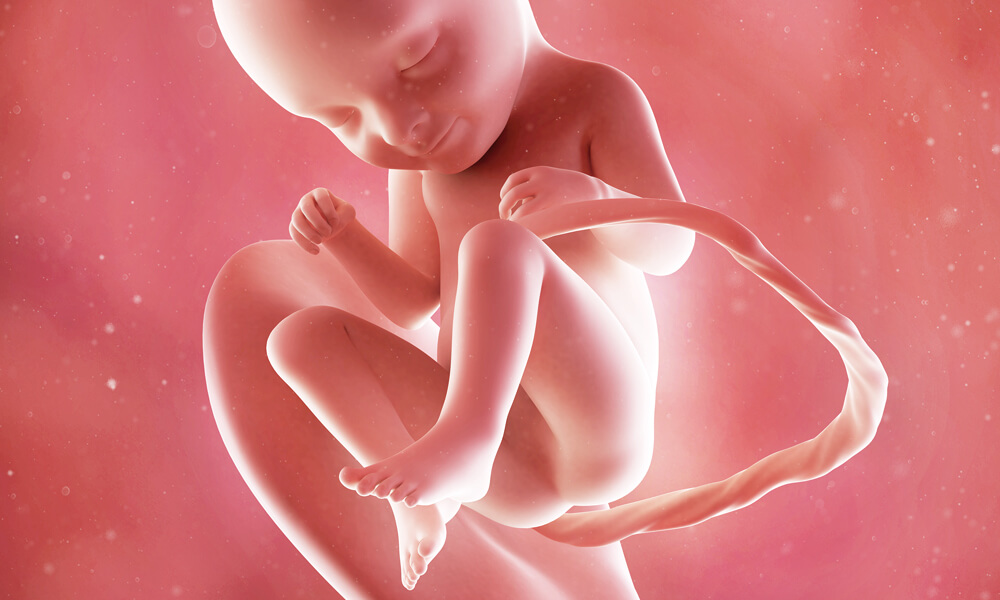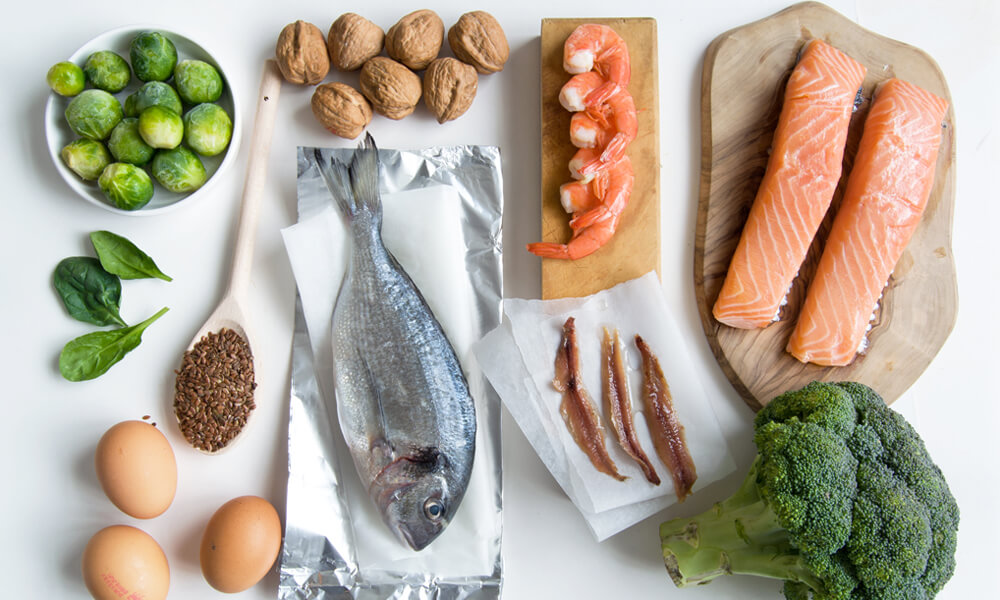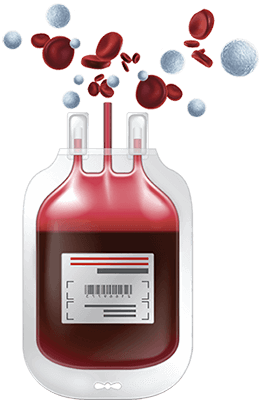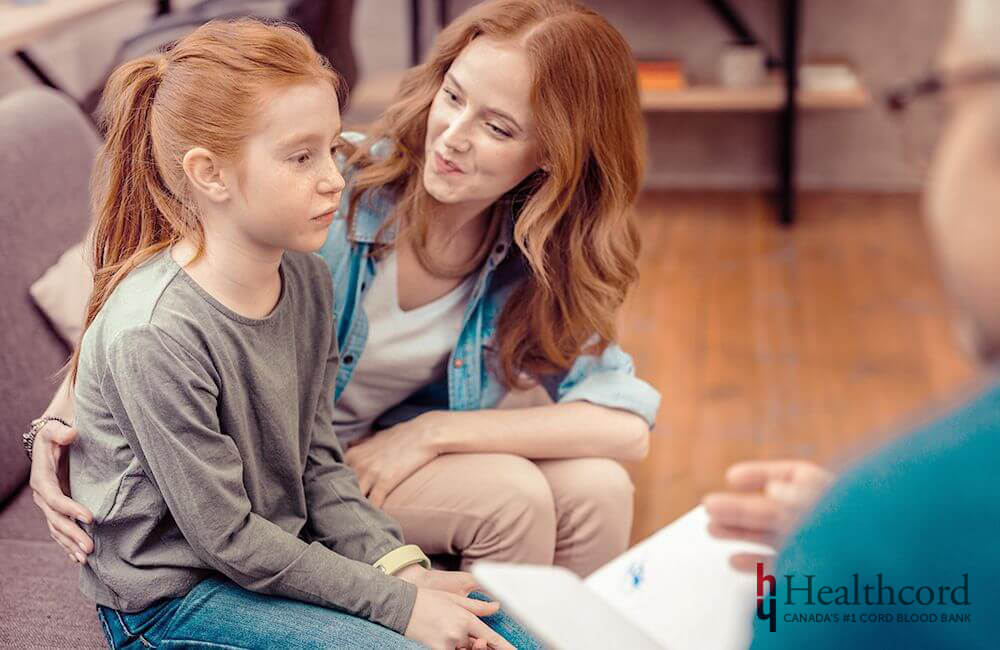Canada's Largest & Oldest Cord Blood Bank
Just a few short weeks to go. Are you ready to meet your baby yet?
This Week’s Highlights
Your baby continues to gain weight
Your can differentiate night from day
You may suffer from insomnia
Your Baby at 33 Weeks
Your baby is the size of a pineapple, measuring about 17.2 inches (43.7 centimeters) long and weighing in at about 4.2 pound (1.9 kilograms).

Baby Development at Week 33
As your baby is putting on weight, the brain is also hard at work trying to get the body ready for birth.
Most of your baby’s bones are now hard except for the skull, which will remain soft allowing the transition through the birth canal. You will be able to feel the fontanelle, the gap between the skull bones, in your newborn. The fontanelle close around 18 months, but the skull plates remain flexible allowing the massive brain growth human children experience in the early childhood years. The bones will only lock in fully in adulthood.
Your baby’s immune system is now ready to gear up. Antibodies passed on from your breast milk will keep him or her protected until the baby’s immune system has time to make antibodies.
If you are lucky, your baby is already positioned for birth with his or her head down pointing toward the exit path. If not, your healthcare provider will tell you that he or she is breeched. This means your baby is still position with their bottom and legs facing toward the birth canal. But not to worry, there is still plenty of time for your little one to get into position before birth.

Pregancy Tip
If you pregnant in the summer month the heat may be getting to you. Try a cold bath, which can also help with your aches and pains, and Braxton Hicks contractions.

Your Bump at 33 Weeks
By now you have probably gained about 22 to 28 pounds (10 to 12.7 kilograms) and are no longer able to see your feet. Some moms love their pregnancy curves others don’t. Remember most of your weight accounts for the baby, the placenta and amniotic fluid. The baby weight will come off after birth especially if you are going to be breastfeeding.
How Your Body is Changing
You will likely start experiencing Braxton Hicks contractions either this week, or in the coming week as your uterus preps for labour. Learn how to distinguish these ‘practice’ contractions from real ones. Braxton Hicks contractions usually take place in the front of the belly, do not increase in intensity and usually go away when you change positions.
Aside from that, keep an eye out for signs of preterm labour including vaginal bleeding, period like cramps and unusual discharge or leaking from the vagina. If you are worried at any point, don’t hesitate to call your healthcare provider for a quick consult.
How Far Along are You?
33 weeks in, 7 weeks to go! You are over four-fifths of the way through your pregnancy. Even though pregnancy is measured in weeks this means you are in your eighth month of your pregnancy.
Stem Cells & Autism
Promising findings show umbilical cord stem cells may be effective for relieving symptoms associated with autism spectrum disorder.
Researchers show that injecting umbilical mesenchymal stem cells to children with ASD is safe and generally well tolerated. In their small study group, 40% of children showed improvement in symptoms, indicating the merits of more extensive studies to look at mesenchymal stem cells as a treatment option for ASD.
Diet at Week 33
Omega-3 is a polyunsaturated fatty acid that is required for growth and development, particular involving the eyes and brain. Your baby’s brain will be undergoing tremendous growth in the third trimester. Given that your body can only make about 15% of omega-3 you and your baby will need, it is important to include omega-3 in your diet. The following foods are excellent sources of omega-3:
- Salmon
- Walnuts
- Eggs
- Tuna

Pregnancy Symptoms at Week 33
Round ligament pain – The round ligament joins the front of your uterus to your groin area and supports your growing belly. As your belly grows, this ligament gets stretched. When there’s pressure on the round ligament, you may notice pain. The pain can be sharp, or it may be a dull aching pain that originates from one or both sides of your abdomen. You may also feel like you have a sore stomach. What can you do? You may want to wear a belly band and avoid sudden movements that were originally responsible for causing ligament pain.
Varicose veins – Varicose veins are caused when blood vessels just under your skin become swollen and twisted. Varicose veins in the leg are most common during pregnancy, and results from the increase in circulation. Extra blood during pregnancy is essential for supporting you and your baby; however, this can put extra pressure on your blood vessels. Remember the progesterone relaxes all smooth muscles including your blood vessels, so the veins in your legs now have to work extra hard to push the blood back to the heart. Increased circulation coupled with relaxation of smooth muscles creates the perfect condition for varicose veins.
Sciatica – Are you experiencing radiating pain along your hip and lower back? Sciatica is caused by the uterus putting pressure on the sciatic nerve, which extends from your lower back and down the legs. Stretching exercises, a cold pack and when necessary an over-the-counter pain relieve can help manage your sciatica. You will want to contact your healthcare provider if you experience any numbness in your feet or legs.
Clumsiness – Several things contribute to the heightened sense of clumsiness at this stage. Your bump has shifted your center of gravity, so your balance is off. Remember, your joints and ligaments are relaxed owing to pregnancy hormones, which makes your grasp on objects less firm. You may be too exhausted to notice that a chair in your living room is out of place. As with the pregnancy brain, this newfound clumsiness will disappear after the baby is born. Just be mindful of these changes and make sure you move with caution to avoid any unnecessary falls.
Have Your Started Shopping for Your Baby Yet?
Many New Stem Cell Therapies May Become Available in the Lifetime of Your Baby.




